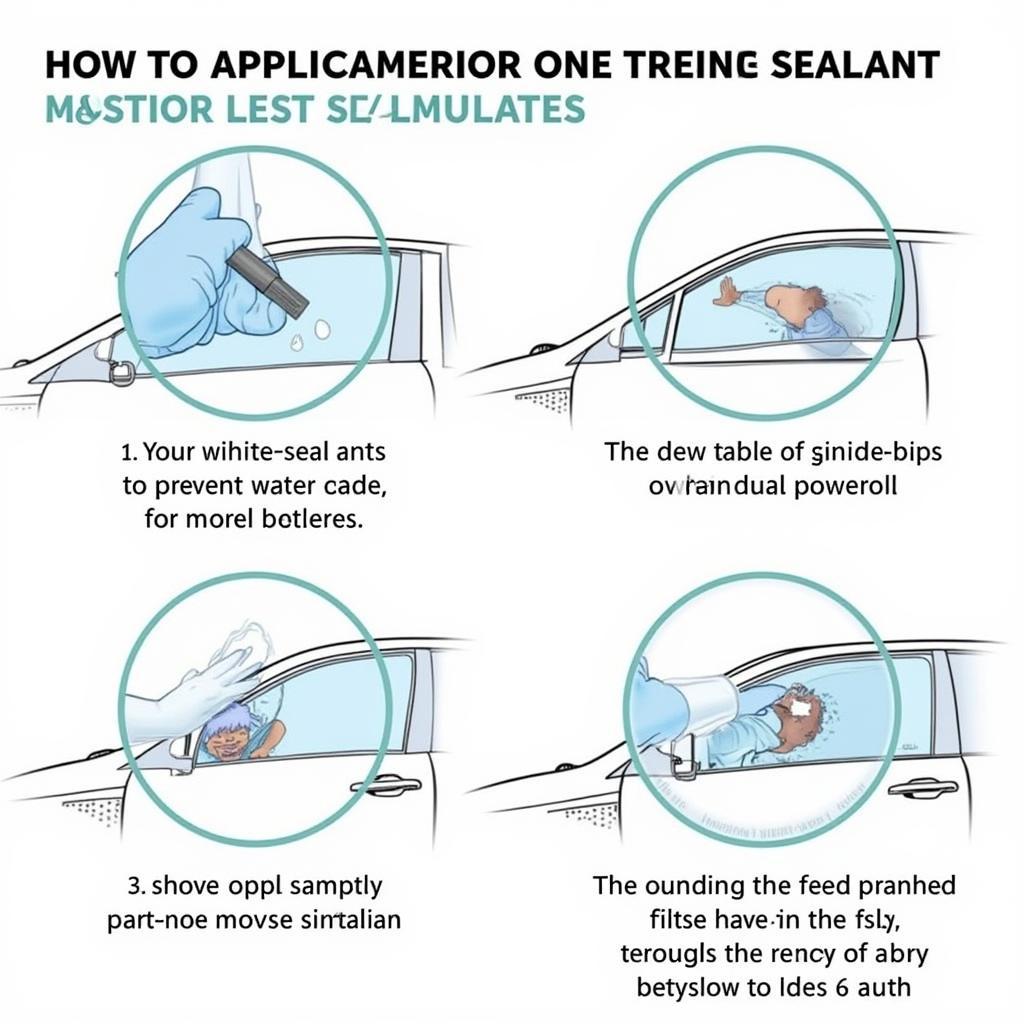Moisture inside your car can be a real nuisance, leading to foggy windows, musty smells, and even electrical problems. This article will dive into the common causes of moisture problems in cars, offer practical solutions for removing existing moisture, and provide preventative measures to keep your vehicle dry and comfortable.
Similar to gem car charger problems, moisture can lead to significant issues if left unchecked. Excess moisture can promote the growth of mold and mildew, creating a health hazard and making your car smell unpleasant. It can also damage the interior, causing upholstery and carpets to deteriorate. Furthermore, moisture can corrode electrical components, leading to malfunctions and costly repairs.
Common Causes of Moisture in Cars
Why is my car so damp inside? Several factors contribute to moisture buildup in your vehicle. Here are some of the most common culprits:
- Leaking seals: Damaged or worn weatherstripping around doors, windows, and the sunroof can allow rainwater to seep into the interior.
- Clogged drain holes: Vehicles have drain holes designed to channel water away from critical areas. If these become clogged with leaves or debris, water can accumulate and cause problems.
- Wet carpets or floor mats: Entering your car with wet shoes or placing damp items like umbrellas on the floor can introduce significant moisture.
- Humidity: High humidity levels in the air can condense on the cooler surfaces inside your car, leading to moisture buildup.
- AC system issues: A malfunctioning air conditioning system can contribute to moisture problems, particularly if the drain tube is blocked.
How to Remove Moisture From Your Car
Dealing with a moisture problem in your car requires a multi-pronged approach. Here’s a step-by-step guide to effectively remove moisture and prevent its return:
- Identify the source: Before you can fix the problem, you need to pinpoint the cause. Carefully inspect your car for leaks, clogged drains, or other sources of moisture.
- Dry out the interior: Use towels or a wet/dry vacuum to remove standing water. Open the doors and windows to allow for air circulation. Consider using a dehumidifier or placing desiccant packs inside the car to absorb excess moisture.
- Clean affected areas: If mold or mildew has developed, clean the affected surfaces with a suitable cleaner. A mixture of baking soda and water can be effective for removing mild mold.
- Repair leaks and clogs: Address any leaks or clogged drain holes you’ve identified. Replacing worn weatherstripping or clearing blocked drains can prevent future moisture problems.
 Cleaning a Car’s AC Drain Tube
Cleaning a Car’s AC Drain Tube
As with alternator problems after not driving the car for months, addressing moisture promptly is crucial to prevent long-term damage. Ignoring a moisture problem can lead to costly repairs down the line.
Preventing Moisture in Your Car
Prevention is always better than cure. Here are some simple steps to keep your car dry:
- Regularly check for leaks: Inspect the weatherstripping around doors, windows, and the sunroof for signs of damage or wear.
- Keep drain holes clear: Periodically check and clean the drain holes around the windshield, sunroof, and doorjambs.
- Use floor mats: Use waterproof floor mats to protect the carpet from moisture.
- Ventilate your car: Crack open the windows occasionally to allow for air circulation, especially after driving in rainy or humid conditions.
- Park in a garage: Whenever possible, park your car in a garage to protect it from the elements.
John Smith, a seasoned automotive technician, advises, “Prevention is key when it comes to moisture problems. Regular checks and simple precautions can save you a lot of hassle and expense in the long run.”
 Applying Car Window Sealant
Applying Car Window Sealant
Conclusion
A moisture problem in your car can be more than just an inconvenience. It can lead to unpleasant odors, interior damage, and even electrical issues. By understanding the common causes, taking prompt action to remove existing moisture, and implementing preventative measures, you can keep your car dry, comfortable, and free from moisture-related problems. For personalized assistance and expert advice, connect with us at AutoTipPro. Our contact information is: Phone: +1 (641) 206-8880, Office: 500 N St Mary’s St, San Antonio, TX 78205, United States.
Similar to what is an ecu problem dealing with cars, moisture can cause serious electrical issues. Addressing it quickly is essential to maintaining your car’s overall health.
 Using Desiccant Packs in Car
Using Desiccant Packs in Car
FAQs
- What is the white powder on my car’s dashboard? This could be mildew caused by moisture buildup.
- How can I get rid of the musty smell in my car? Cleaning and drying the interior, along with using an odor eliminator, can help.
- Can moisture damage my car’s electronics? Yes, moisture can corrode electrical components and cause malfunctions.
- Why are my car windows always fogging up? Moisture inside the car condenses on the cooler window surfaces, causing fogging.
- How often should I check my car for leaks? It’s a good idea to check for leaks at least twice a year, especially before and after the rainy season.
- Is it safe to drive with a moisture problem in my car? While driving with some moisture may be unavoidable, excessive moisture can be a safety hazard due to foggy windows and potential electrical problems. Address the issue promptly.
- Are there problems with cars that are not driven enough? Yes, similar issues may arise. You can read more about it in this article about are there problems with cars that are not driven enough.
Just as with a car starter contacts problem, early detection and action are essential in preventing further damage.




Leave a Reply